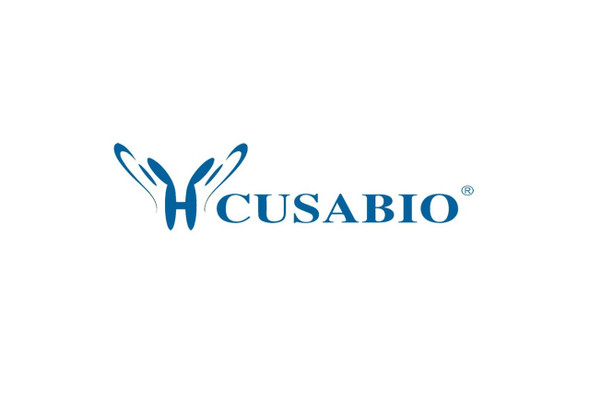Cusabio Active Proteins
Recombinant Human Protein disulfide-isomerase protein (P4HB) (Active) | CSB-AP000091HU
- SKU:
- CSB-AP000091HU
- Availability:
- 5 to 10 Working Days
Description
Recombinant Human Protein disulfide-isomerase protein (P4HB) (Active) | CSB-AP000091HU | Cusabio
Protein Description: Partial
Alternative Name (s) : PDI, Cellular thyroid hormone-binding protein, Prolyl 4-hydroxylase subunit beta, p55,
Gene Names: P4HB,ERBA2L,PDI,PDIA1,PO4DB
Research Areas: Signal Transduction
Species: Homo sapiens (Human)
Source: E.Coli
Tag Info: N-terminal 6xHis-tagged
Expression Region: 19-508aa
Sequence Info: MRGSGSHHHHHH+ APEEEDHVLVLRKSNFAEALAAHKYLLVEFYAPWCGHCKALAPEYAKAAGKLKAEGSEIRLAKVDATEESDLAQQYGVRGYPTIKFFRNGDTASPKEYTAGREADDIVNWLKKRTGPAATTLPDGAAAESLVESSEVAVIGFFKDVESDSAKQFLQAAEAIDDIPFGITSNSDVFSKYQLDKDGVVLFKKFDEGRNNFEGEVTKENLLDFIKHNQLPLVIEFTEQTAPKIFGGEIKTHILLFLPKSVSDYDGKLSNFKTAAESFKGKILFIFIDSDHTDNQRILEFFGLKKEECPAVRLITLEEEMTKYKPESEELTAERITEFCHRFLEGKIKPHLMSQELPEDWDKQPVKVLVGKNFEDVAFDEKKNVFVEFYAPWCGHCKQLAPIWDKLGETYKDHENIVIAKMDSTANEVEAVKVHSFPTLKFFPASADRTVIDYNGERTLDGFKKFLESGGQDGAGDDDDLEDLEEAEEPDMEEDDDQKAVKDEL
Biological Activity: Thiol Protein Reductase Activity is 0.001 Δ650nm/ min-2, determined by measuring the turbidity increase at 650 nm due to insulin reduction.The activity is expressed as the ratio of the slope of a linear part of the turbidity curve to the lag time.
MW: 56.6 kDa
Purity: >95% as determined by SDS-PAGE and HPLC.
Endotoxin: Less than 1.0 EU/µg as determined by LAL method.
Relevance: This multifunctional protein catalyzes the formation, breakage and rearrangement of disulfide bonds. At the cell surface, seems to act as a reductase that cleaves disulfide bonds of proteins attached to the cell. May therefore cause structural modifications of exofacial proteins. Inside the cell, seems to form/rearrange disulfide bonds of nascent proteins. At high concentrations, functions as a chaperone that inhibits aggregation of misfolded proteins. At low concentrations, facilitates aggregation (anti-chaperone activity) . May be involved with other chaperones in the structural modification of the TG precursor in hormone biogenesis. Also acts a structural subunit of various enzymes such as prolyl 4-hydroxylase and microsomal triacylglycerol transfer protein MTTP. {ECO:0000269|PubMed:10636893, ECO:0000269|PubMed:12485997}.
PubMed ID: 3034602; 3611107; 2846539; 14702039; 15489334; 1597478; 9150948; 12665801; 2079031; 1286669; 9399589; 3342239; 1699755; 10636893; 11181151; 12485997; 12095988; 12218051; 12218052; 12643545; 15158710; 14592831; 15644496; 17081065; 21269460; 24275569; 25683117; 8580850; 8672469; 10383197;
Notes: Repeated freezing and thawing is not recommended. Store working aliquots at 4℃ for up to one week.
Function: This multifunctional protein catalyzes the formation, breakage and rearrangement of disulfide bonds. At the cell surface, seems to act as a reductase that cleaves disulfide bonds of proteins attached to the cell. May therefore cause structural modifications of exofacial proteins. Inside the cell, seems to form/rearrange disulfide bonds of nascent proteins. At high concentrations, functions as a chaperone that inhibits aggregation of misfolded proteins. At low concentrations, facilitates aggregation (anti-chaperone activity) . May be involved with other chaperones in the structural modification of the TG precursor in hormone biogenesis. Also acts a structural subunit of various enzymes such as prolyl 4-hydroxylase and microsomal triacylglycerol transfer protein MTTP. Receptor for LGALS9; the interaction retains P4HB at the cell surface of Th2 T helper cells, increasing disulfide reductase activity at the plasma membrane, altering the plasma membrane redox state and enhancing cell migration
Involvement in disease: Cole-Carpenter syndrome 1 (CLCRP1)
Subcellular Location: Endoplasmic reticulum, Endoplasmic reticulum lumen, Melanosome, Cell membrane, Peripheral membrane protein
Protein Families: Protein disulfide isomerase family
Tissue Specificity:
Paythway: Proteinprocessinginendoplasmicreticulum
Form: Lyophilized powder
Buffer: Lyophilized from a 0.2 µm filtered PBS, pH 7.0
Reconstitution: We recommend that this vial be briefly centrifuged prior to opening to bring the contents to the bottom. Please reconstitute protein in deionized sterile water to a concentration of 0.1-1.0 mg/mL.We recommend to add 5-50% of glycerol (final concentration) and aliquot for long-term storage at -20℃/-80℃. Our default final concentration of glycerol is 50%. Customers could use it as reference.
Uniprot ID: P07237
Uniprot Entry Name: PDIA1_HUMAN
HGNC Database Link: HGNC
UniGene Database Link: UniGene
KEGG Database Link: KEGG
STRING Database Link: STRING
OMIM Database Link: OMIM









